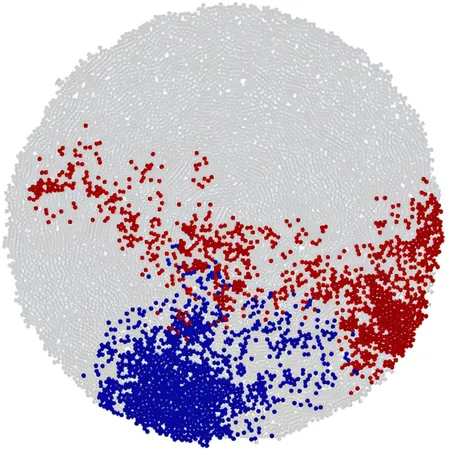
Groundbreaking Study Reveals Surprising Truth About Tumor Growth: Do We Need to Rethink Cancer?
2024-11-26
Author: Jia
Introduction
Researchers from the University of Cologne and the Center for Genomic Regulation (CRG) in Barcelona have made a revolutionary discovery that could reshape our understanding of cancer growth. In a study published in the prestigious journal eLife, they assert that tumors grow uniformly throughout their mass, contradicting the long-held belief that cancer cells proliferate more rapidly at the tumor's outer edges.
Key Findings of the Study
Dr. Donate Weghorn, a key author of the study from CRG, emphasizes, “We challenge the traditional view of tumors as 'two-speed' entities, with fast-growing cells on the surface and slower ones in the core. Our findings indicate that every region within a tumor is equally active, allowing it to harbor aggressive mutations.”
This fresh perspective on tumor evolution reveals that the continuous cycle of cell death and regeneration within the tumor provides ample opportunities for harmful adaptations, including evasion from immune responses. Professor Johannes Berg from the University of Cologne notes that the study has profound implications for understanding how cancers develop and resist treatments.
Challenging Long-held Beliefs
For over half a century, scientists have believed that cancer cells nearer to the periphery of the tumor had advantages due to improved access to oxygen and nutrients, as well as easier waste elimination. As a tumor expands, cells at the center face increasing difficulties in obtaining nutrients, leading to a decline in their ability to survive and divide.
Innovative Research Methodology
However, the recent research showcases that tumor growth isn't confined to the periphery. Using innovative spatial genomics—a technique allowed them to analyze genetic information based on precise locations within the tissue—the researchers compiled data from previous studies involving numerous small samples taken from various regions of liver tumors. This provided critical insights into how mutations are distributed throughout the tumor.
Mutation Patterns and Growth Simulations
By examining these mutations and developing a novel method to track their spread, researchers found that, contrary to expectations, mutation angles are uniformly dispersed in all directions within the tumor, signifying consistent growth throughout its entirety. Furthermore, their analysis indicated that if cancer had only grown at the edges, mutations would appear heavily clustered; however, they found mutations were spread out, asserting that cell division occurs uniformly.
To corroborate their findings, the team conducted computer simulations, generating virtual models of tumors exhibiting both surface and volumetric growth. Remarkably, they discovered that the mutation patterns in actual tumors closely matched those from the volumetric growth simulations, completely failing to align with surface growth scenarios.
Caution and Future Research
While the results are groundbreaking, the authors caution that their focus on liver cancer means these findings may not universally apply to all cancer types. Additionally, as their research primarily examines early tumor growth stages, it leaves unanswered questions about larger or metastatic cancers.
Conclusion
In conclusion, Dr. Berg highlights the clinical significance of their findings: “The emergence of mutations that lead to treatment resistance is crucial. Although our focus was early-stage tumor dynamics, extending research to include late-arising mutations could unveil valuable insights into why some therapies fail.”
As this research challenges earlier assumptions, the question remains: will this insight lead the way to more effective treatments for cancer? The medical community is eager to find out!




 Brasil (PT)
Brasil (PT)
 Canada (EN)
Canada (EN)
 Chile (ES)
Chile (ES)
 España (ES)
España (ES)
 France (FR)
France (FR)
 Hong Kong (EN)
Hong Kong (EN)
 Italia (IT)
Italia (IT)
 日本 (JA)
日本 (JA)
 Magyarország (HU)
Magyarország (HU)
 Norge (NO)
Norge (NO)
 Polska (PL)
Polska (PL)
 Schweiz (DE)
Schweiz (DE)
 Singapore (EN)
Singapore (EN)
 Sverige (SV)
Sverige (SV)
 Suomi (FI)
Suomi (FI)
 Türkiye (TR)
Türkiye (TR)